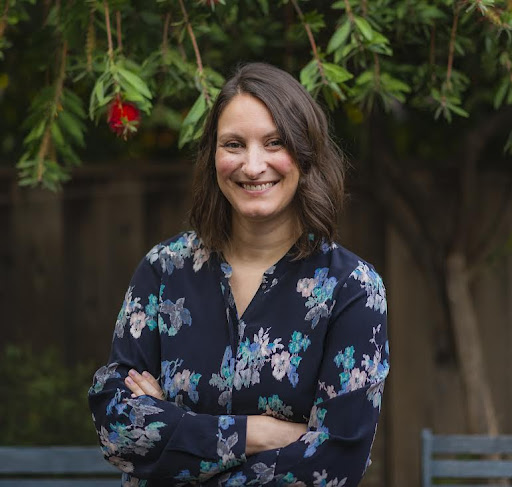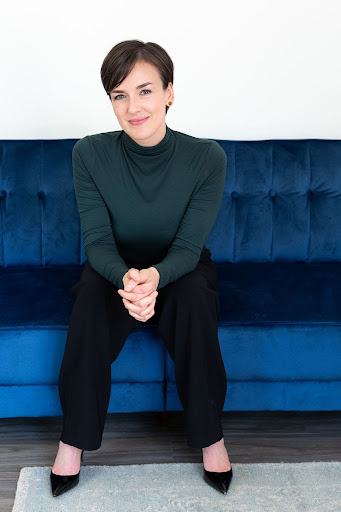Learning in community is becoming increasingly popular amongst Thinkific students and creators alike.
Perhaps that’s because the pandemic has made many people feel (very) alone, and the thought of learning solo just isn’t as appealing as learning in a group setting. Or, maybe it’s because cohort learning increases motivation, accountability, diverse perspectives, and connection between students. Whatever the reason for its boost in popularity, this synchronous learning method — a method that involves people gathering in the same space in real time to learn material live — has positively impacted these course creators’ businesses as well as their students’ learning experience.
“The momentum of a group moving forward together in real time is like being on a ship that is already moving,” says Kimberly Ann Johnson, somatic experiencing practitioner, author, and Thinkific course creator. “You don’t have to start the engine and keep it going on your own. You board the ship, and let the ship and the passengers help you. There is generally greater motivation in continuing when there are others on the journey heading toward a similar destination and sailing the same waters.”
Here, three course creators share what they’ve learned through creating cohort courses to help you along your own teaching journey:
1. There’s power in community learning
Johnson says that since she works with such sensitive topics — such as sexuality and trauma — she was skeptical about teaching online, let alone in a group. However, she was surprised at how teaching these subjects in an online cohort was even more effective than one-on-one. “Online cohort based courses allow people who have no access to therapy or are too shy to go to an in-person group to participate at their own comfort level,” she says.

According to Johnson, a cohort learning model helps to create a level of intimacy and understanding amongst students; she says that when her students hear each other’s stories, struggles, and experiences, layers of shame are peeled away. “Many of the concerns my students experience are societal and collective problems that they struggle with on a personal level. In a time of so much disconnect and isolation, learning with others is so impactful,” she says.
Since experiencing the success of teaching a cohort course, Johnson is an advocate for community-based learning — especially in her field of work. When we learn in community, we benefit from the healing of others,” she says. “Trauma and sex are such loaded topics, often shrouded in shame. When seeking help in these areas, it can be difficult to find the right practitioner, as well as the time and money required to see them. Engaging the social nervous system so that students learn how to be together in real time, they learn how much they want to share with each other and get to experiment with exposing themselves. They reckon their social anxieties, misgivings and apprehensions, and repattern some of their fears and habits in groups.”
Like Johnson, Joanna Wiebe, conversion copywriter and creator of Copyhackers, has found much success with the cohort learning model. She says that not only is community learning powerful in the way that it brings together like-minded students who can collaborate and learn from each other, it also increases student success. “We are social creatures and all think differently,” says Wiebe. “Being in community brings the ‘fun’ to learning as well as many differing viewpoints. We’ve found that with diversity, our users get even more out of the community than they do the lessons.”
Wiebe says that watching students grow and succeed in their businesses has been the biggest win of cohort learning. “We’ve even collaborated with and hired many past students,” she adds.
Related: How To Create A Cohort Based Course
2. Combining cohort and self-paced learning increases accessibility
Jocelyn Thomspon, creator of Work Vision Consulting, first experienced online cohort learning while in a four-week anti-racism course that she took earlier this year. She says that her group met weekly via video, and although the meetings were optional, there were normally 10 to 20 people in attendance. Since this course, she’s kept in touch with many of her peers. “I knew that when I created my own course, I wanted people to have the same experience of learning together,” she says.
Her course — launching October 2021 — mixes synchronous and asynchronous education to make learning accessible to different types of learners, especially those with disabilities. With the hopes of teaching DEI, compensation, and HR professionals how to conduct a pay equity audit, she’s included a range of media in her course to appeal to different people. This media includes video with transcripts and captions, audio with transcripts, narrated slides, and downloadable PDFs. “I think my students will benefit from cohort learning because they can bounce ideas off each other and get ideas from what others are doing regarding their pay systems. They will also have the opportunity to make connections for future career development,” she says. “However, the self-paced portion allows for people with disabilities, busy lifestyles, and even emergencies to still complete the course when it works for them. I like having both options available to make it accessible to most people.”

Johnson and Wiebe also offer both styles of courses. Johnson’s cohort model is taught live once per week using Zoom, and her self-paced courses can be taken whenever convenient for students. In both self-paced and cohort courses, students can join Facebook groups to converse with each other.
Wiebe’s self-paced courses allow students to pick and choose what they need, while her cohort courses offer a more focused set of teachings. In her 10x Freelance Copywriter course, one module is dropped each month over seven months. She uses Circle, Slack, and Zoom alongside Thinkific to stay in touch between live sessions.
Related: 7 Steps To Building An Online Community (With Examples)
3. Cohort learning helps to keep students motivated
Wiebe says that the biggest differentiator between self-paced and cohort courses is accountability. “People don’t like to fall behind and feel left out,” she says.
While she’s continually evaluating how to keep students engaged and motivated, Wiebe says that an active community and subscription-based membership helps to motivate students. “People tend to be more involved if they are paying for it as opposed to just buying it and forgetting about it,” she says.
Wiebe’s courses also have accountability ambassadors — affectionately called ‘badassadors’ — as well as success badges that are given to students once they achieve certain milestones. These ‘badassadors’ run the community and are there to help Copyhackers’ students solve problems and implement the changes they desire in their businesses. She says that students in her courses also stay motivated by the fact that the course’s lessons will change students’ businesses if they follow instructions and implement the teachings. “Plus, in the community, students can talk to hundreds of other students that started out exactly where they were but now have the success they were looking for,” she says.

For Johnson, posting short, live videos in her students’ Facebook group helps to keep her students engaged and motivated. Additionally, she sends emails with reminders and ‘pep talks,’ as she calls them, between sessions so that her students know that even if they are overwhelmed or have missed a class, they can still show up exactly as they are. Plus, she creates a brief summary of each week’s class so that her students can go back to it and center themselves each day in that week’s learning. She also records videos and audio specific to each week’s lesson so that they don’t have to go back and listen to the whole class.
Thompson plans on having a similar approach once her course is launched next month; she’ll be sending weekly emails and also connecting with her students on LinkedIn. She’s also including quizzes at the end of each chapter to keep people engaged.
While community learning may help to naturally increase motivation and accountability, there’s still effort required by the course creator in keeping students engaged.
For Johnson, her biggest challenge with cohort-based learning is determining how to encourage people to continue showing up without making them feel that the material is just one more thing they have to do. She also says that it was difficult to anticipate how much support she and her group would need in order to provide a worthwhile experience and deliver on her promises. “I have to make sure that students have the proper support they need if something challenging arises. But each time I teach, I improve the structures to catch people who need a net,” she says.
Related: How To Create An Effective Professional Learning Community
4. Cohort learning can create repeat students
For Johnson, the key to scaling her courses is in creating repeat students rather than constantly trying to find new ones. “I create a sense of community between students that has them wanting to come back to learn with each other,” she says. “The group atmosphere is impactful. Don’t underestimate the power of a strong group bond to propel students forward. Many students are worried about how the group will be held and what the limits will be, but most are pleasantly surprised at how constructive and powerful the shares are.”
For Wiebe, finding the right students has been the key for scaling Copyhackers’ courses. This means that scaling has been a bit more of a gradual process. “We want students that will put in the work and actually add value to the community,” she says. “We have students from our first ever 10x Freelance Copywriter cohort that are still in the membership over 30 months after the last lessons were released, purely for the community aspect.”
5. Teaching a cohort course requires you to hone in on your natural strengths
Johnson says that when it comes to creating a cohort-based course, it’s important to know your strengths. She says creators should ask themselves if they like to teach with a tight structure or improvise. “What works for you and what you love transfers to your students,” she says. “They are coming as much for you as for the material. So make choices based on what lights you up. I taught all my courses live first which is what I love to do. Then for the courses I didn’t want to teach live but I felt were important, I pulled transcripts, edited them, and pre-recorded them. That felt truer to my natural flow.”
“I have taken thousands of women through the process of reclaiming their power with sex, money, and parenting,” continues Johnson. “Now, we have a robust group of people from around the world who I can call a community.”
Ready to dive into the world of cohort-based courses? Check out the Spaces for Thinkific Community and learn how to develop your own cohort program. For more information on all things cohort-based learning, read this article.






